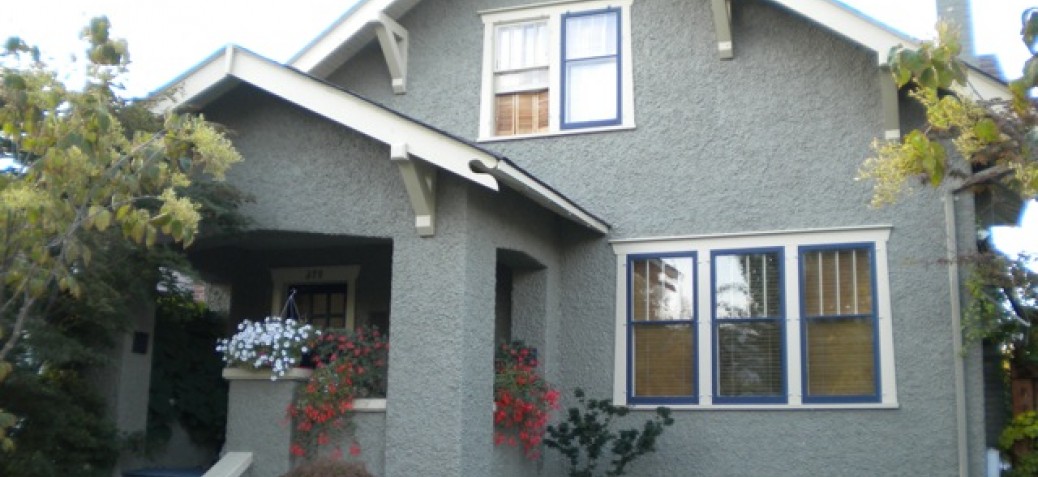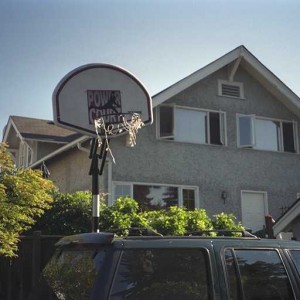G.L. Dore House
Place Description
The G.L. Dore House is a stucco-clad one and one-half storey Craftsman influenced bungalow, situated mid-block on the south side of Park Avenue, between Abbott and Long Streets in Kelowna's historic Abbott Street neighbourhood. It is built close to the lot line with a low rubble-stone wall at the front that spans to the adjacent property.
Heritage Value
The G.L. Dore House is of heritage value for its architecture and contribution to the streetscape. Located among houses of a similar style, scale and era with a consistent setback, this residence is a fine example of the vernacular expression of the Craftsman style, popular across North America in the early years of the twentieth century. This influence is demonstrated by the use of distinctive triangular eave brackets, multi-paned windows and scroll-cut bargeboards.
Furthermore, this house is of significance for its association with local contractor George Launchbury Dore (1878-1971), its builder and designer. Trained as a stone mason, Dore arrived in Kelowna in 1918 and when this house was constructed in 1920 was in business as G.L. Dore & Sons. His brother-in-law, Howard Ryan, arrived in Kelowna in 1920. They established a partnership, and the contracting firm of Dore and Ryan became well known in the city, constructing many houses and institutional buildings such as the DeHart Primary School and Kelowna Junior High School. Doryan Street, just to the east of this site, is named in commemoration of the partners.
Character Defining Elements
Key elements that define the heritage character of the G.L. Dore House include its:
- mid-block location facing north on a street of houses of complementary scale and age;
- residential form, scale and massing as expressed by its one and one-half storey plus basement height and rectangular plan;
- front-gabled roof with symmetrical side wall dormers with overlapping hipped returns;
- wood-frame construction with roughcast stucco cladding;
- additional exterior elements such as its two brick chimneys (one external and one internal), open soffits with exposed rafter tails, triangular eave brackets, scroll-cut bargeboards, gabled front porch with Tudor arch openings, curved stair cheeks with square piers, original panelled front door with 6-pane glazed inset and original hardware, and battered window and door surrounds with drip mouldings and returned crowns;
- regular fenestration, including single and double assembly 4-over-1 and 3-over-1 double-hung wooden-sash windows and fixed multi-pane basement windows; and
- landscape features such as the low rubble-stone wall on the front of the property that continues to the next property.





